Two unconnected events on Thursday 29th January 2015.
SOAS Cleaners demand Dignity & Respect – SOAS, London University
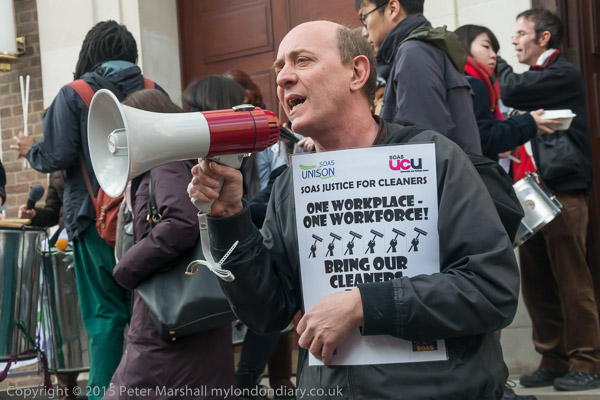
Cleaners working at the University of London School of Oriental and African Studies – SOAS – held a rally calling for improved conditions of service and an end to being treated as a second-class workforce. Supported by students and staff they continue their campaign to be employed by the University rather than cleaning contractor ISS.
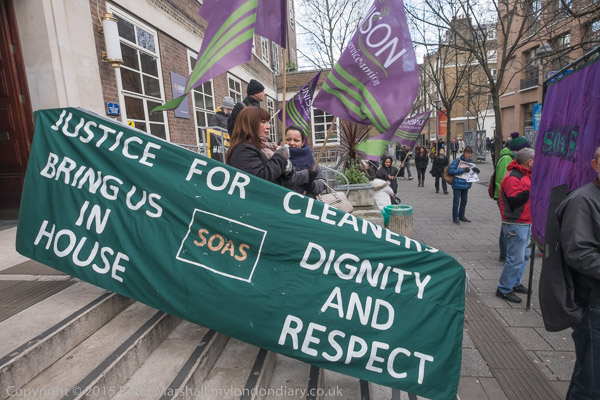
SOAS is a university with an international reputation for its progressive views on political issues around the world and exposing the detrimental effects of neo-liberalism, but its management had failed to acknowledge the beam in its own eye, its disgraceful treatment of cleaners.
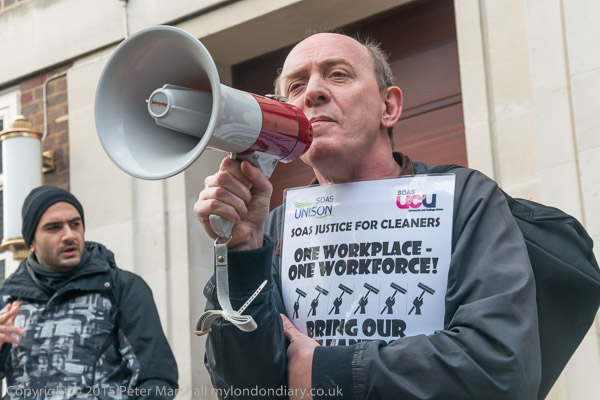
Most of those who keep the SOAS building clean and working smoothly are immigrants to the UK, mainly with Spanish as their first language. Instead of putting these people on the SOAS payroll and treating them as employees with similar rights to all the others who work in the same building, SOAS contracts out its cleaners. This denies them care and protection and leaves them open to exploitation and abuse by cut-price cleaning contractors.
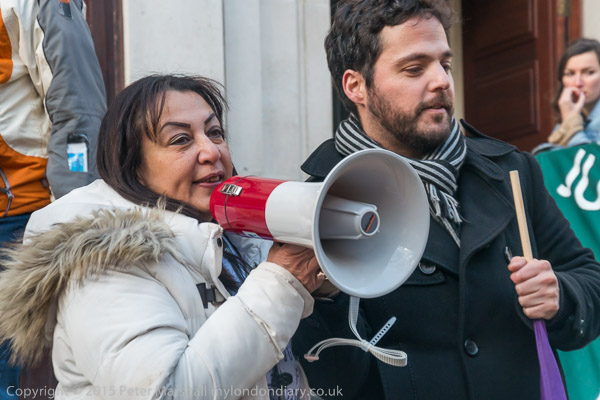
Even worse in June 2009, SOAS management collaborated with the Home Office by calling a 6am “emergency meeting” of the cleaners which was in fact an immigration service raid, resulting in the deportation of nine cleaners. The raid came shortly after the SOAS Justice For Workers (J4W) had a successful campaign to achieve union recognition and the London Living Wage and was widely seen as a spiteful retaliation by the SOAS management following this victory.
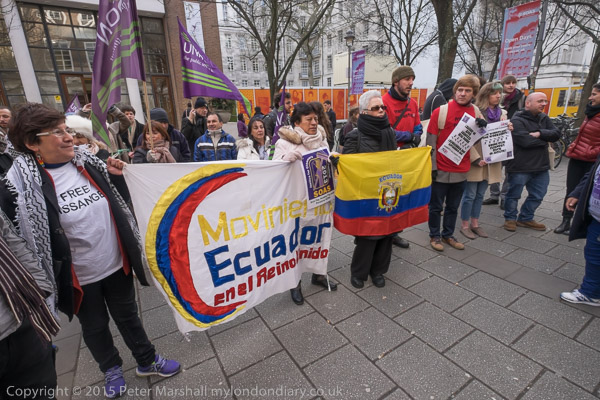
The immigration raid is remembered at SOAS every year on its anniversary in June. The J4W campaign led by the SOAS Unison Branch continued and on 29th of January their protest for direct employment under the slogan ‘One Workplace, One Workforce’, supported by students, teaching and administrative staff as well as other trade unionists and organisations.
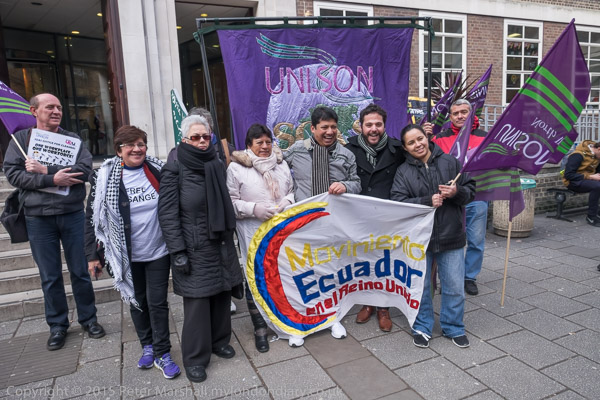
Eleven long years of protest, as well as work to show SOAS the advantages to the organisation of employing the cleaners directly finally resulted in a victory in 2018, when SOAS sent a letter to all staff, unions and support staff stating, ‘Our current staff in central facilities teams will be directly employed by the university. This means that they will be on equal pay and conditions with existing SOAS employees’.
More pictures at SOAS Cleaners demand Dignity & Respect.
‘Tin Pan Alley’ 12 Bar club faces eviction – Denmark St
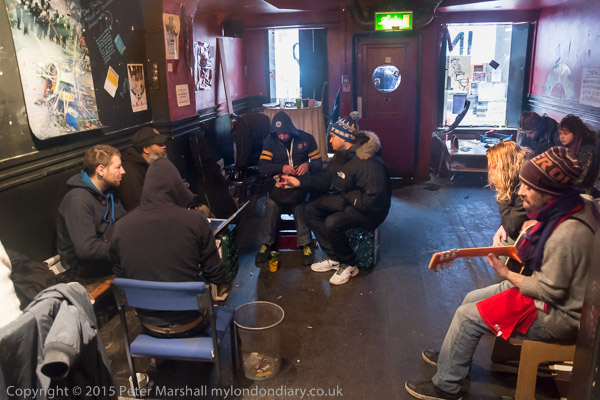
Denmark Street is a short street linking St Giles High Street with Charing Cross Road, first developed in the late 17th century and named after Prince George of Denmark. When I first went down it in the 1970s it was a one-way back-street with little or no traffic, and both sides were lined with shops, offices and studios connected with the music industry.
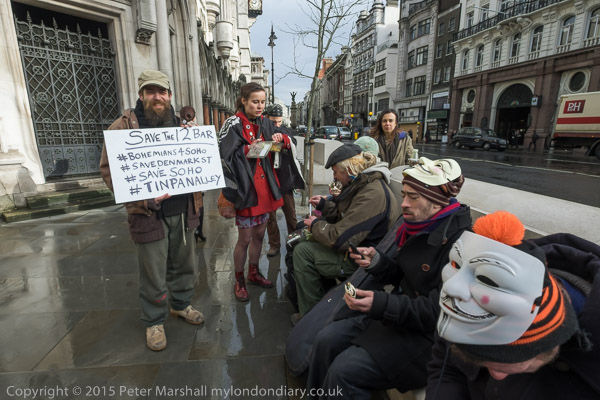
This was Britain’s “Tin Pan Alley” where session musicians and artists gathered, meeting each other and looking for work. The Rolling Stones recorded their first album here and David Bowie recruited his first band in a bar. The Sex Pistols lived in the street and recorded their first demos here – and so much more. It became a huge centre for musical instrument sales; I came here to look in windows full of guitars and saxophones I couldn’t afford and later came her to buy a professional Roland keyboard for my sons.
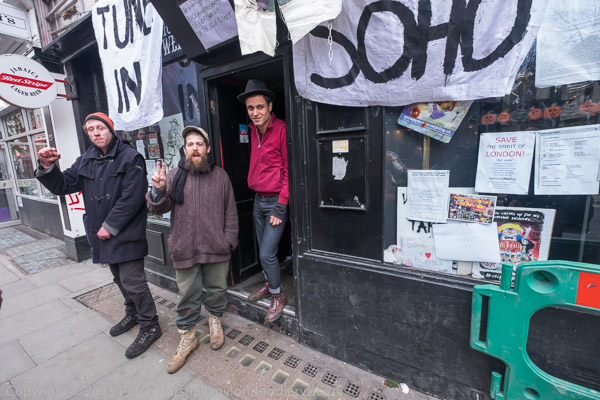
But above the mainly early 20th century shop fronts were the houses, some dating from from the original buildings of 1686-9, and others not much later. Eight were Grade II listed, two as early as 1951 and the others in 1974. The street is one of very few, if not the only, one in London with such early facing terraces on both sides.
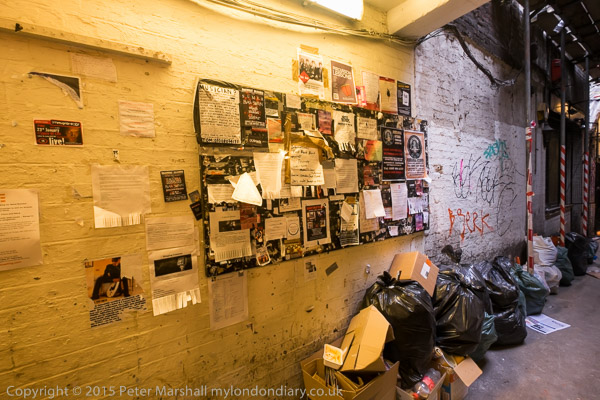
Listing ensured that the redevelopment of the street as a part of the Crossrail development around Tottenham Court Road would keep the facades, though much behind them is now new, and most of the old businesses have gone – many moving earlier as the music business changed and rents had rocketed. A petition with 10,000 signatures opposed the redevelopment asking for the street to be given full heritage status.
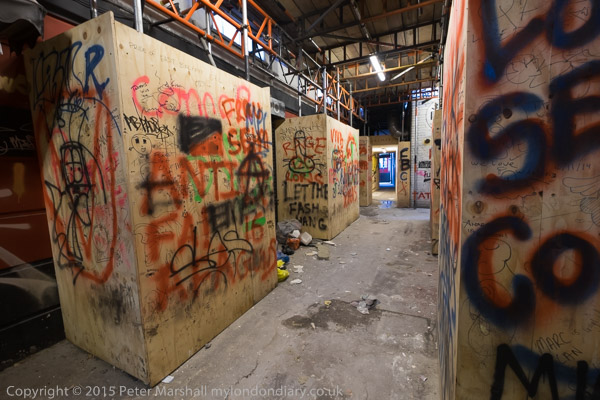
The 12 Bar Club had been running as a small live music venue since 1994 at 26 Denmark Street, in a listed building that began life in 1635 as stables but had in the early 18th century become a terraced house. The club closed in January 2015, and was then squatted by a group of musicians and supported opposed to its loss.
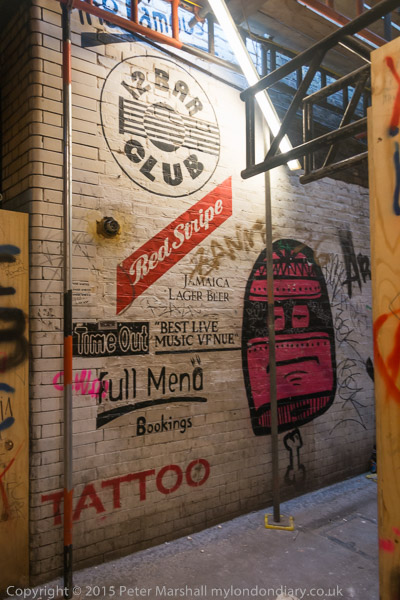
I went there on 29th January when the squatters, #Bohemians4Soho had called for a street festival of resistance against their expected eviction the following day, having met and being invited by some of the squatters on the 28th as they demonstrated at the Royal Courst of Justice where a court case over their eviction was taking place.
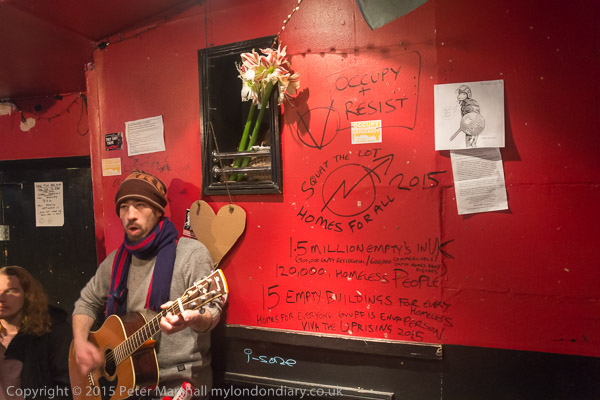
Shortly before I arrived to take pictures they had been served with an IPO (interim possession order) giving them 24 hours to leave before they were committing a criminal offence. They left as the bailiffs arrived the following lunch time.
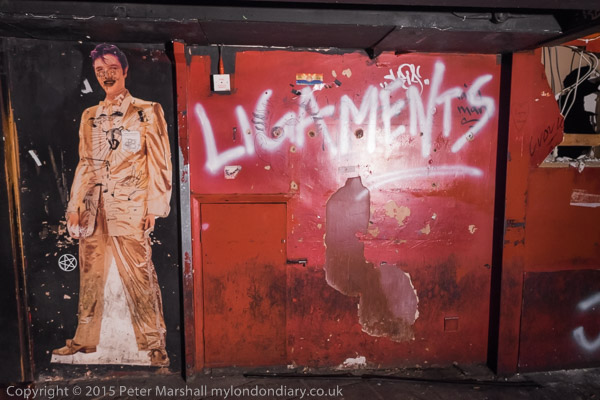
The listed building was stabilised, then lifted by crane for redevelopment to take place below it, after which it was lowered back into place. The old 12 Bar club room is now a part of a larger venue at the site.
More pictures: ‘Tin Pan Alley’ 12 Bar club faces eviction.







